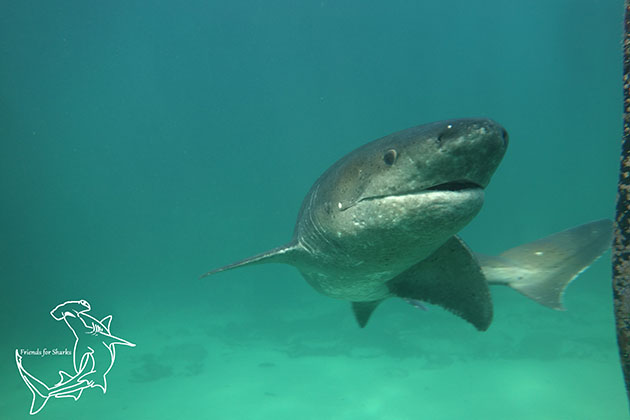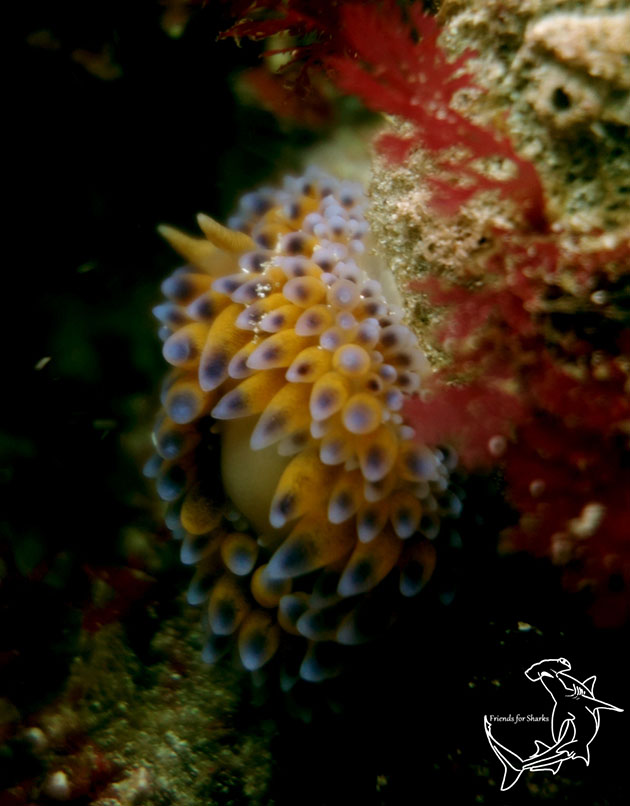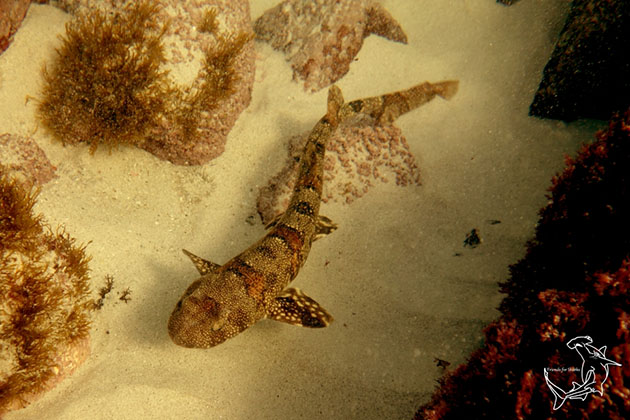When you ask people to describe shark diving, the average person describes teeth, blood, terrifying shark encounters, crystal clear tropical waters and very large intimidating sharks. They speak of being out of your mind if you wish to dive with such creatures and dismiss you as being a touch insane. They also question your sanity if you explain that diving with sharks is actually a peaceful and relaxing, even spiritual, experience. Thankfully, as television branches out beyond scare tactics with shark programmes on occasion the general population is realising there might be some truth in what scuba divers say; that there is nothing more humbling and awe inspiring than diving with sharks. Their beauty and grace is second to none and they are not at all the man eating monsters we have been led to believe they are.
When I think of shark diving my mind wanders immediately off the obvious dives such as great white sharks, hammerheads and tigers and onto the lesser known species of shark that I adore and, quite frankly, will travel half way around the world to experience time with. Did you know there are such things as Cow sharks? Pyjama sharks? Happy Eddies? What is not to love about a shark with a name that contains the word happy?! When a Happy Eddie is threatened it curls up into a ring shape and covers its eyes with its tail until the danger has subsided. That behaviour has also earned it the name Doughnut shark.
How can sharks be scary if their names contain words that describe sugary foodstuffs and positive emotions?
I am like a child in a sweetshop with those shark species and have been incredibly fortunate to live in South Africa this year, where I have been able to dive with the happy doughnuts, the pyjamas and the cows.
There is a relatively unknown and unused dive site close to our home in the Western Cape that is my playground with these sharks and it is blissful, if not a little cold, diving there. It is definitely a dive that requires a 5-7mm wetsuit, given the site sits within the relatively cool waters of False Bay, and the visibility varies from 1-10m without much notice but my goodness it is worth it. The dive site itself is easily accessible with a short scramble over smooth, hump shaped pebbles and boulders that take you onto a white sand beach for an easy walk into the surf. I say easy but for me most waves are at face height and pummel me senseless thanks to my short stature and lack of balance. I often fall over onto my back but, such is the job of dive buddies, mine becomes my human shield and all is well as he retrieves me from my ‘turtle on its back’ impression. The dive buddy system is one I rely on a lot for that aspect of the dive.
Once in the water, I am all about being playful at that dive site and spend my time swirling and wriggling in between the thick, dense kelp forest looking for treasures of all shapes and sizes. The kelp forests in False Bay are incredibly productive and contain different species of nudibranch including the Gasflame nudibranch. This species is only found along a stretch of the South African coast and they hide away from the current in between large boulders, their flames aglow and a stark contrast to the grey boulders around them. It is worth diving in the Western Cape just to see their colours.
Many of the rocks at that dive site are covered in urchins and bright orange starfish that stick out like sore thumbs amongst their spiky counterparts. I hadn’t realised there were so many different colours of urchin until I explored that dive site. There are fish species of all shapes and sizes, black and pink chunky snails, more nudibranchs and enough crevices to entertain the keenest of macro photographer for a long dive. The sunshine pours through the kelp fronds above and creates dancing patterns of light on the sandy bottom. It really is that stunning.
But what of the sharks? Happy Eddies (Puffadder shyshark) and Pyjama sharks (Striped catshark) are the easiest to spot with their distinctive markings. It is difficult to miss a Pyjama shark when it passes by, thanks to its black stripes and look akin to an old fashioned bank robber or humbug mint. They slink under boulders and hide their faces when spotted, perhaps unaware that their body is sticking out and clearly visible to passing divers? The Happy Eddies seem to be slightly more confident, despite their smaller size, and I have yet to see one curl up into a ring shape. Their markings are equally as interesting, with marbling and mosaic patterns across their backs, and they are fun to watch as they swim at pace along the sand in search of shelter or perhaps their next meal. By far the most entertaining though are the cow sharks.
Cow sharks are considered the most primitive of all sharks and their appearance certainly lives up to the notion that they are such. They have large round eyes, mottled grey skin and look, well, old. Their teeth are hidden and they have a gummy look of an ageing granddad that belies the fact they are apex predators like Great White sharks. Cow sharks are cooperative and hunt in groups for Cape Fur seals. They are very relaxed and inquisitive to be around but they do have a tendency to appear right next to you all of a sudden. I have often found they linger outside of my range of vision, just behind my shoulders, and then appear with their big eyes to see what I am doing. Their freckles and white spots are clearly visible when they calmly glide past and away once they have been seen by me. In spite of their tendency to make me jump, they are not at all intimidating to dive with and are a species I would recommend to any diver interested in sharks.
I can’t get enough of diving with those species and I am certainly going to miss them when we leave South Africa in preparation for our Friends for Sharks charitable World Tour 2015. It is time for us to leave the cows behind though, put our dive kit away and start inspiring others to love and protect sharks and oceans. Sometimes I wonder if we are leaving or if this next adventure of ours is just a dream. Have we really given up our careers to go around the world and give educational talks to peoples of all ages? Will we reach each destination and raise money for our two nominated charities The Shark Trust and Project AWARE? Yes and yes. If a group of sharks named after cows can catch a seal then we can make it around the world on a tiny budget, capture the attention and hearts of others and make a difference to this world.
To follow what promises to be an exciting and eventful tour, please find us at the following links. This is just the beginning and we hope you will join us to show your support for sharks. Perhaps we will see you at one of our talks across the globe? I hope so.
Facebook: https://www.facebook.com/FriendsforSharks
Website: http://www.friendsforsharks.com/
Twitter: http://www.twitter.com/FfSharks
Instagram: http://instagram.com/friends_for_sharks










